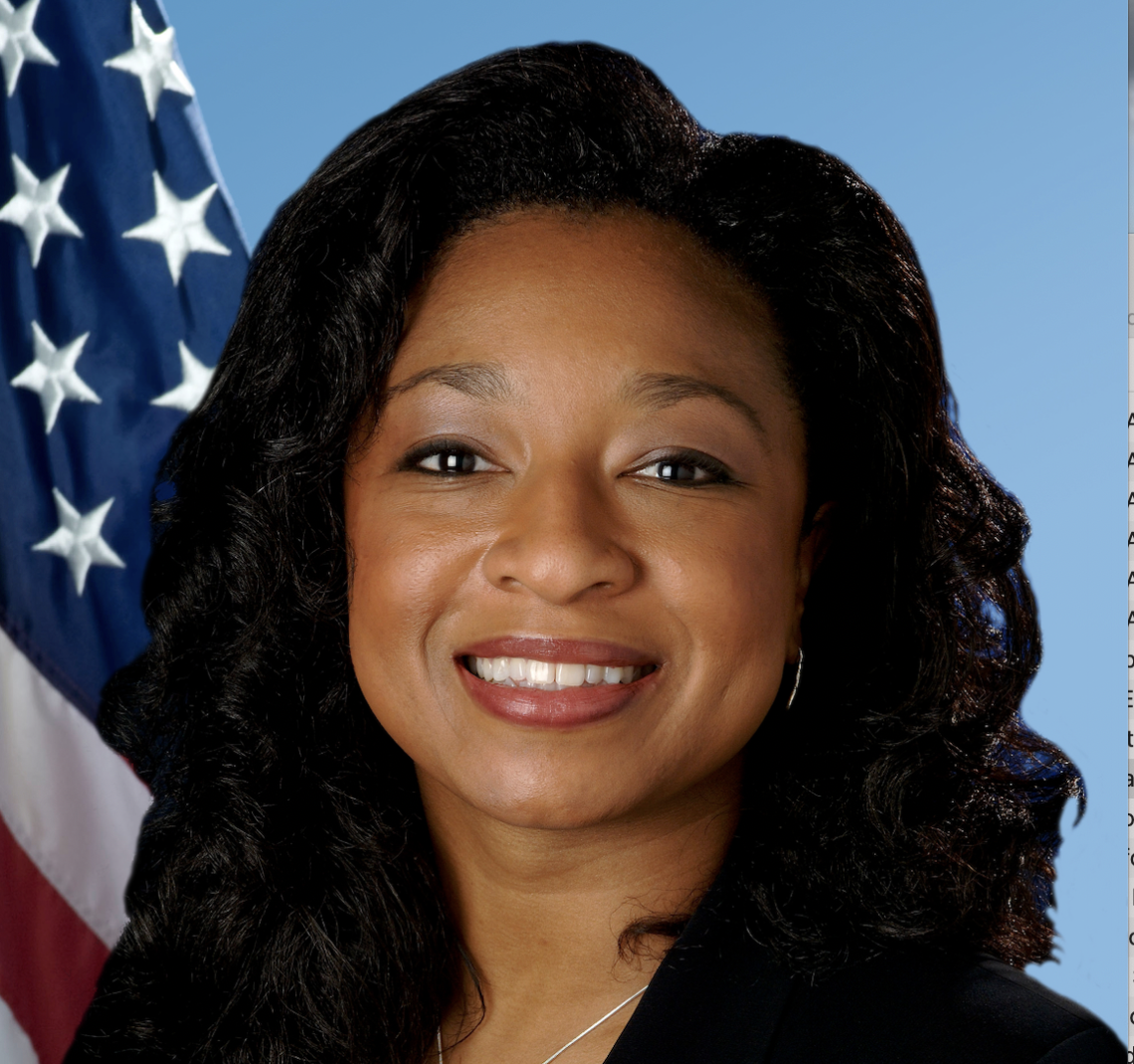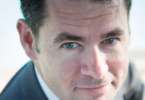Christyl Johnson (PhD) is NASA’s Goddard Space Flight Center’s Deputy Director for Technology and Research Investments. She manages the center’s research and development portfolio, and is responsible for formulating the center’s future science mission and technology goals and objectives and leading an integrated program of investments aligned to meet those goals.
Johnson came to NASA Goddard from the White House Office of Science and Technology Policy, where she served under the President’s science adviser as the executive director of the National Science and Technology Council (NSTC), which is the principal means within the executive branch to coordinate science and technology policy across the Federal research and development enterprise. She was responsible for ensuring the establishment of clear national goals for Federal science and technology investments in a broad array of areas across the executive branch, including basic science, technology, energy, environment, natural resources, and homeland and national security. Prior to joining the White House staff, Johnson served as the assistant associate administrator in NASA’s Office of the Administrator. In this role, she and the associate administrator provided the oversight of the agency’s technical mission areas and field center operations.
She also held several other roles at NASA including associate director for exploratory missions in the Office of Earth Science, where she managed the formulation and development for all exploratory missions at Jet Propulsion Laboratory, Goddard Space Flight Center and Langley Research Center. Johnson began her career at Langley Research Center in Hampton, Va., where she held a variety of project management and senior engineering positions involved in the design, development and application of state-of-the-art and advanced systems and subsystems for atmospheric, aeronautic and space flight research missions.
She earned her bachelor’s degree in physics from Lincoln University, a master’s degree in electrical engineering from Pennsylvania State University, and a PhD in systems engineering from George Washington University. Johnson was a speaker at the Women In Tech Global Summit in Paris May 22 and 23 and is a member of the conference organization’s board. While in Paris she spoke to The Innovator about what companies can learn about innovation from NASA.
Q: Tell us a little bit about what your job entails
CJ: As deputy director for technology and research investments. I am in charge of envisioning the missions of the future in earth science, heliophysics, astrophysics and planetary science and developing a portfolio of technology investments to enable those missions. I am also responsible for strategic partnerships. We work with the global community to create missions together. The Artemis mission is one such example. This mission has as its long-term goal having a sustainable human presence on Mars. To prepare for that we are looking at sending humans to the moon, not just for a quick visit but to live there, sustainability. This will help us establish a proving ground for the technologies and capabilities we will need to live outside earth. We can’t reach our ultimate long-term goal of living on Mars without testing the technologies needed to grow large amounts of food and provide energy and air to sustain life. When we leave the protective layer surrounding Earth, we must ensure that we are able to protect humans from the harmful effects that solar flares would have on humans and the machinery on the surface and in transport to these other planetary bodies. This will require creating habitats underground and over ground, advanced agriculture that can survive in extreme climates and high-tech health solutions. We won’t be able to send MRI machines into space so we will need to develop really advanced sensors on and about the body that will allow us to create digital replicas of organs so that, for example, we could pull a digital version of your heart out of your body and spin it around and open it up so that doctors back on Earth might be able to see a blockage and know exactly what to do to save your life.
Q: How do you anticipate and plan for the future?
CJ: When you need to plan the next 20 years it is important stakeholders can see that you are making progress, so you need to address all time ranges, meaning some quick wins and progressive milestones to show them you have a vision.I make a minimum of 5% of investments in very early stage technologies when there is no MVP and no defined specific application. I do so even if I know that they are so early in their development that the investment may not pan out. That is a risk I need to take. If you want revolutionary changes you need to invest in early stage technologies sometimes just to prove or disprove some theories. To be successful with innovation you need to keep the long game in sight and not be solely focused on this year. Success will come if you plan for the longer term and invest strategically in the short term. With the short-term investments, you also need to be willing to shift courses quickly when technologies don’t pan out or if they are more successful than you anticipated.
Q: What are the key mistakes corporates make when trying to innovate?
CJ: The mistake that so many organizations make when investing in technologies is only investing in those that are so far advanced that they are ready to be applied. That means they are myopically focused on today rather than seeding what they need to be ready for the future.
Another challenge that some companies have is their perceived inability to partner with others and playing everything close to the vest. At NASA we are a government agency, so we are not in it for a profit. We partner with everyone. We work on missions with private industry, we use outside scientists as principal investigators, we partner with university students and professors to create and execute missions and hire young people to intern at NASA and work directly with our engineers and scientists to create together.
An area where I have seen companies make critical missteps has been in future casting. It is important to get the right people around the table. Companies usually try and find experts in their niche areas to look at their future trajectory and anticipate problems. If you gather people with the same expertise and the same background you will end up with group think. These people are used to thinking about problems from their unique vantage point and are not going to give you revolutionary change.
Q: What does work?
CJ: What I have learned to do – and it has been very successful for me and for companies that collaborate with NASA- is to tap into the expertise of outside experts. For example Speedo, the maker of bathing suits, came to us and said ‘you at NASA are experts at reducing drag and friction for airplanes. Can you help us reduce the drag and friction for swimsuits?’ So, we worked with them on the LZR racing swimsuit. It was launched one month before the 2008 Olympics and athletes that wore this swimsuit broke 13 world records. Then the NFL came to us because a high school student playing football had a heat stroke and died during practice. Then the same thing happened to a professional football player who also had a heat stroke and died. This got a lot of media attention and people were upset. The NFL came to us and asked ‘How are we supposed to know when players are in danger? Can you help us?’ We did. We had already developed a digital thermometer pill that you swallow for astronauts. It measures your core body temperature and lets you know if it is elevated. Now it is being used by coaches to monitor the players, so they know when to tell them it is time in come in. It is also being used to monitor deep sea divers so that people standing by on the boat realize when a diver’s core body temperature drops and can pull them out of the water. None of these applications have anything to do with space. They illustrate how, when you bring in somebody outside of your area to look at your problem, you can come up with revolutionary changes in the way you operate.
The reason NASA has been so successful over so many years and has such a strong brand is that we pride ourselves on diversity and by that, I mean complete diversity. We take the position that we need very young people, and we honor our seniors. We keep them on as senior advisors and don’t kick them out to ensure knowledge transfer to our younger people. In addition to age diversity, we pride ourselves on gender, race, sex, and other diversity objectives. We don’t just hire diverse candidates, but we work hard to ensure that the environment they work in will sustain them. That also means having diverse leaders across the agency. When people see strong women or underrepresented groups in leadership, they know we take it seriously. It is also evidenced as you look at the change in makeup of our astronaut core over the years.
Q: Just like many companies used to say they would hire women if they could find qualified candidates, they say the same thing about minorities. How do you respond to those arguments?
CJ: To find talented people you need to go where they are. If you are always going to the same sources looking for broader candidate pools, you must expand your sources. There are many well qualified candidates with diverse background if companies are willing to go looking for them with a serious intent to bring them into an environment that is productive and inclusive. When we are not getting enough diverse candidates for a position, we tap into employee resource groups that represent 8 or 10 different categories – African Americans, Hispanic, Women, Asians, LGBTQIA, etc. These employees all have their networks and help us to get the word out.
Q: What advice do you have for companies?
CJ: Be brave enough to go outside of your organization and even outside of your field to help you look at problems with a totally different lens.
This article is content that would normally only be available to subscribers. Sign up for a four-week free trial to see what you have been missing.
To access more of The Innovator’s Interview Of The Week articles click here.







